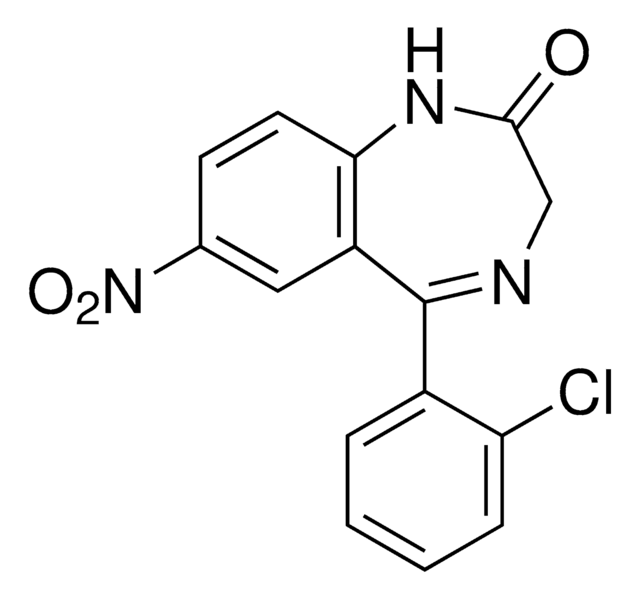D6883
2′,7′-Dichlorodihydrofluorescein diacetate
≥97% (HPLC), powder, cell-permeable non-fluorescent probe
Synonym(s):
2′,7′-Dichlorofluorescin diacetate, DCFH-DA, 2′,7′-Dichlorodihydrofluorescein diacetate
About This Item
Recommended Products
Product Name
2′,7′-Dichlorodihydrofluorescein diacetate, ≥97%
Quality Level
Assay
≥97%
form
powder
storage temp.
−20°C
SMILES string
CC(=O)Oc1cc2Oc3cc(OC(C)=O)c(Cl)cc3C(c2cc1Cl)c4ccccc4C(O)=O
InChI
1S/C24H16Cl2O7/c1-11(27)31-21-9-19-15(7-17(21)25)23(13-5-3-4-6-14(13)24(29)30)16-8-18(26)22(32-12(2)28)10-20(16)33-19/h3-10,23H,1-2H3,(H,29,30)
InChI key
PXEZTIWVRVSYOK-UHFFFAOYSA-N
Looking for similar products? Visit Product Comparison Guide
General description
Application
- sensitive and rapid quantitation of oxygen-reactive species in response to oxidative metabolism
- microplate assay for detecting oxidative products in phagocytic cells
- quantitative multiwell myeloid differentiation assay
Storage and Stability
Storage Class Code
11 - Combustible Solids
WGK
WGK 3
Personal Protective Equipment
Choose from one of the most recent versions:
Already Own This Product?
Find documentation for the products that you have recently purchased in the Document Library.
Articles
Oxidative stress is mediated, in part, by reactive oxygen species produced by multiple cellular processes and controlled by cellular antioxidant mechanisms such as enzymatic scavengers or antioxidant modulators. Free radicals, such as reactive oxygen species, cause cellular damage via cellular.
Our team of scientists has experience in all areas of research including Life Science, Material Science, Chemical Synthesis, Chromatography, Analytical and many others.
Contact Technical Service








